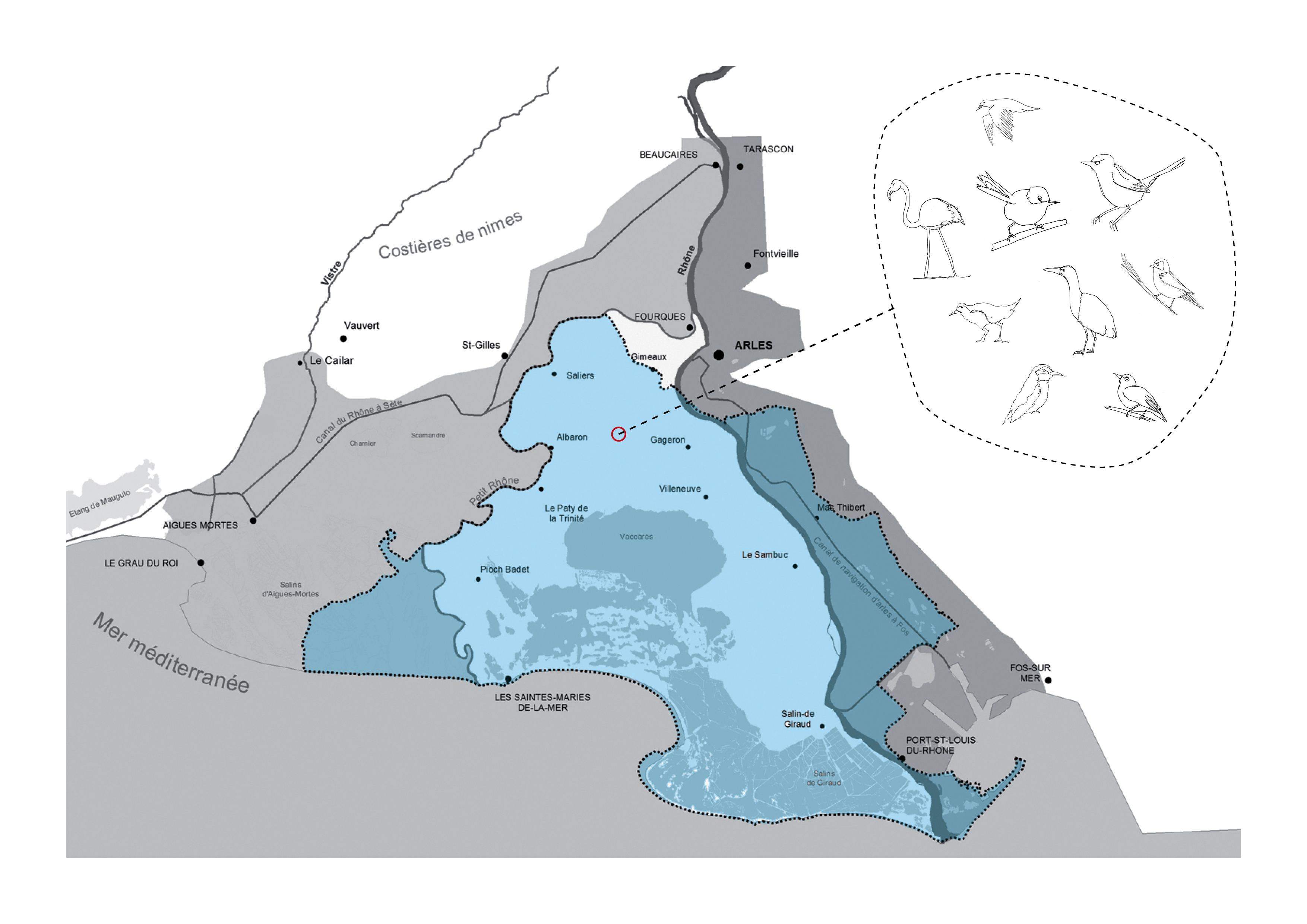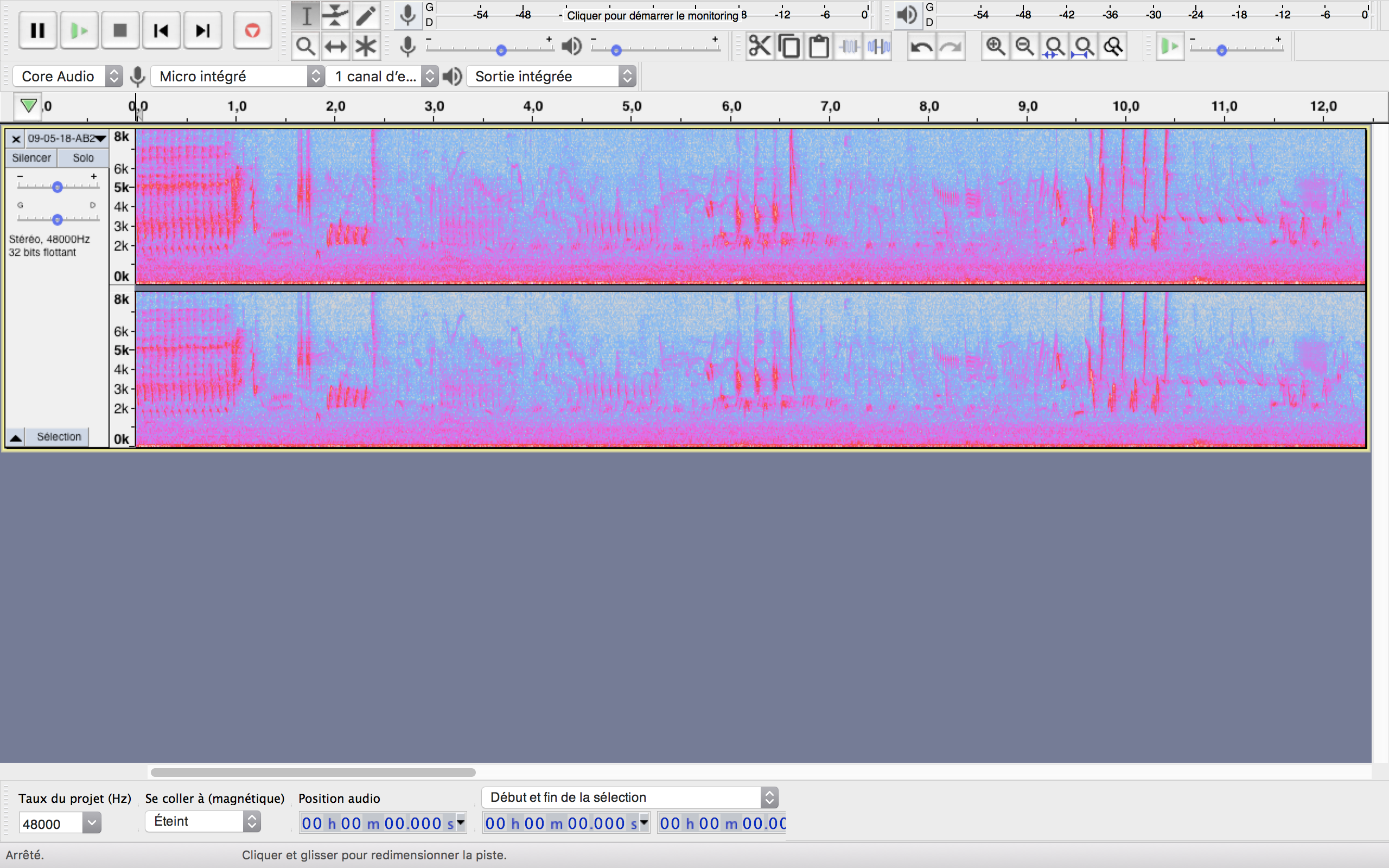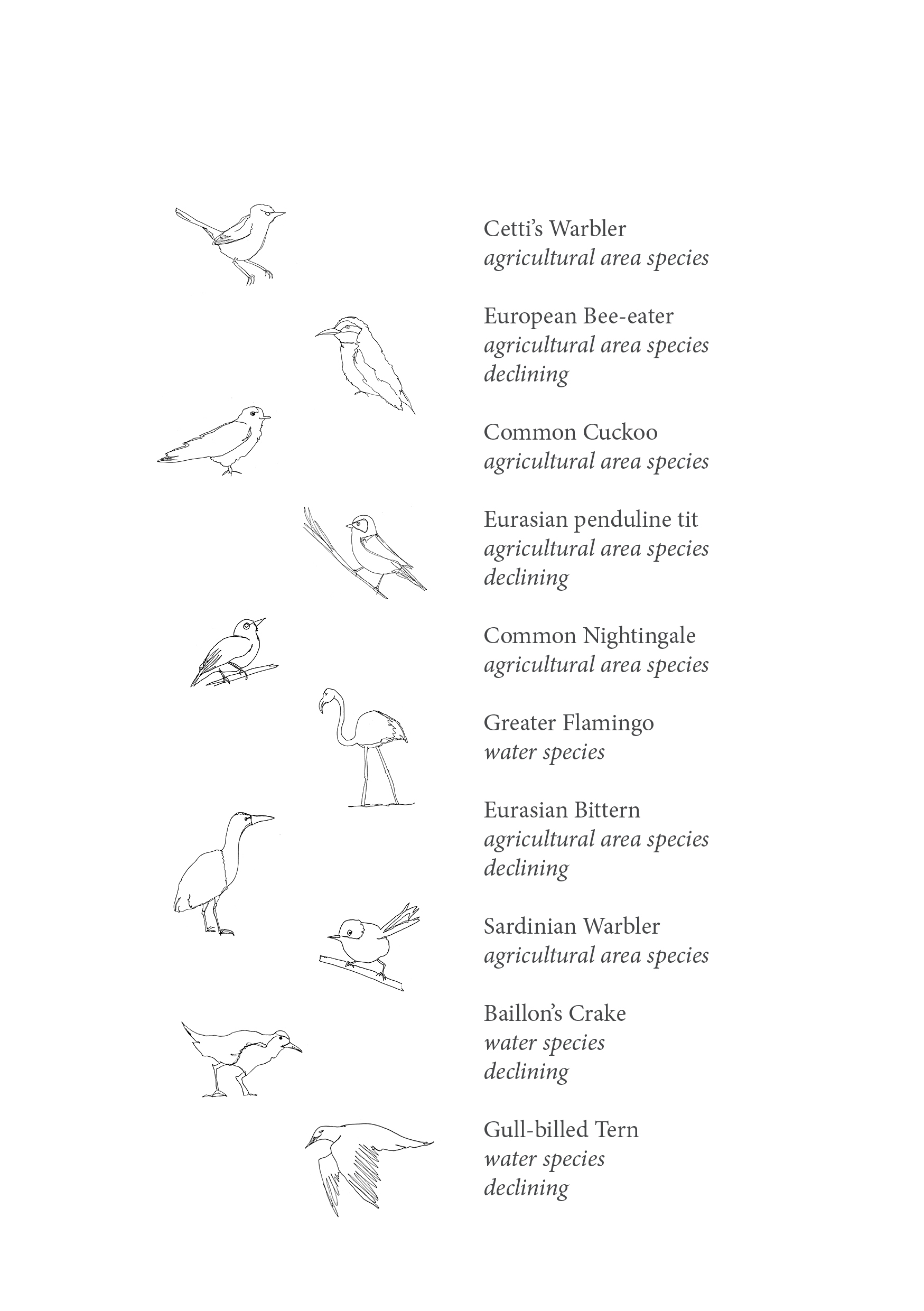![]()
The Great Camargue’s Birds Orchestra
︎︎︎ Performance et installation sonore - Luma Arles (Arles, Août 2018)
performance and sound installation - Luma Arles (FR, 2018)
︎︎︎ Performance - Fondation Vincent van Gogh (Arles, Février 2019)
performance - Fondation Vincent van Gogh (Arles, FR, 2019)
![]()
Depuis 2017, avec la Tour du Valat (institut de recherche pour la conservation des zones humides méditerranéennes), je constitue une bibliothèque sonore rassemblant une diversité de répertoires d’oiseaux nichant en Camargue. Chaque espèce qui constitue la biodiversité d’un lieu détient son propre territoire phonique pour des raisons de survie. Pour permettre l’équilibre dans leurs communications, tout chant d’oiseau et d’insecte s’accorde ainsi avec la temporalité et la fréquence des autres. La symbiosphère est alors en dialogue permanent, respectant les cycles de chacun, et formant ainsi un espace sonore à l’organisation minutieuse. Loin d’une cacophonie, une biodiversité saine est très riche en sons agencés méthodiquement. Une seule perturbation dans cet orchestre engendre un déséquilibre croissant de son ensemble.
En Camargue, comme la majorité des insectes ont disparus, certains oiseaux comme la Marouette de Baillon, la Rémiz Penduline ou le Guêpier d’Europe sont aujourd’hui très difficiles à réenregistrer. Leur silence est accablant, tandis que des espèces parasites comme le Coucou gris ont pris possession de leurs résidences sonores délaissées.
Cette bibliothèque évolutive est un véritable témoin acoustique de l’impact de la crise environnementale au fil des années, tant ces enregistrements révèlent le déclin et le désordre invisibles de la biodiversité de la Camargue. De cette nature amputée de sa musique, seuls restent comme souvenirs phoniques mes enregistrements effectués ainsi que ceux de tout amateur de biophonie.
I have been working with the Tour du Valat (research institute for the conservation of Mediterranean wetlands) since 2017, creating a sound library of sounds of different birds nesting in the Camargue. Each species that constitutes the biodiversity of a place occupies its own phonic territory in order to survive. To allow a certain balance in their communications, all bird and insect sing within the temporality and frequency of the others species. The symbiosphere is thus in a permanent dialogue, and respects the cycles of each, forming a minutely organized sound scape. Far from a cacophony, a healthy biodiversity is very rich in methodically arranged sounds. A single disturbance in this orchestra generates a growing imbalance in its ensemble.
In the Camargue, as the majority of insects have disappeared, certain birds such as the Marouette de Baillon, the Rémiz Penduline or the European bee-eater are today very difficult to re-record. Their silence is deafening, while parasitic species like the Common Cuckoo have taken over their abandoned sonic homes.
This evolving library is a true acoustic witness to the impact of the environmental crisis over the years, as these recordings bring to light the invisible decline and disorder of the biodiversity of the Camargue. My recordings, as well as those of any amateur of biophony, remain as the last phonic memories of this nature amputated from its music.
![]()
![]()
Ci-dessus : deux sonogrammes (représentations visuelles de bandes sonores) de mes enregistrements effectués respectivement en 2017 et 2019 au sein du même lieu en Camargue, au même jour de l’année et à la même heure. Le premier graphique révèle trois chants différents d’oiseaux qui se répondent. Le second n’affiche que la seule espèce survivante de ce secteur deux ans plus tard.
Above: two sonograms (visual representations of soundtracks) of my recordings made respectively in 2017 and 2019 in the same place in Camargue, on the same day of the year and at the same time. The first graph reveals three different bird songs that respond to each other. The second shows only the single surviving species two years later.
Recomposition sonore de la Camargue à l’aide de différents chants d’oiseaux. Chacun de ces derniers fut, au cours des 30 dernières années, un marqueur d’évolution environnementale par son déclin et son impact sur l’organisation de la biodiversité régionale.
Dans cette composition, j’ai redonné à chaque oiseau une place équitable dans le temps et l’espace phoniques pour restituer un paysage acoustique imaginaire, à la fois sain et lisible. La temporalité du son est dilatée pour encourager une lenteur dans sa perception : ralentir un son, c’est comme agrandir le corps de sa source. Dans le cas des oiseaux, ralentir leurs chants permet de replacer leurs fréquences à une échelle proche du corps et de la voix humaine. Ainsi, cela attise les fonctions automatiques qu’a le cerveau pour se concentrer presque mécaniquement sur ces hauteurs de son.
Phonic design of the Camargue soundscape using different bird songs. Each of these has been, over the past 30 years, a marker of environmental change through the impact of its decline on the organization of regional biodiversity.
In this composition, I gave each bird a fair place in phonic time and space to restore an imaginary acoustic landscape, both healthy and readable. The temporality of sound is dilated to encourage a slowness in its perception: slowing down a sound is like enlarging the body of its source. In the case of birds, slowing down their songs allows their frequencies to be placed on a scale close to the body and the human voice. Thus, it stirs up the automatic functions of the brain, bringing its focus almost mechanically to these pitches. This diffusion is thought of as a speculative stroll in this orchestra that could become a pedagogic soundtrack for the visitors of Luma Arles.
![]()
![]()
![]()
![]()







